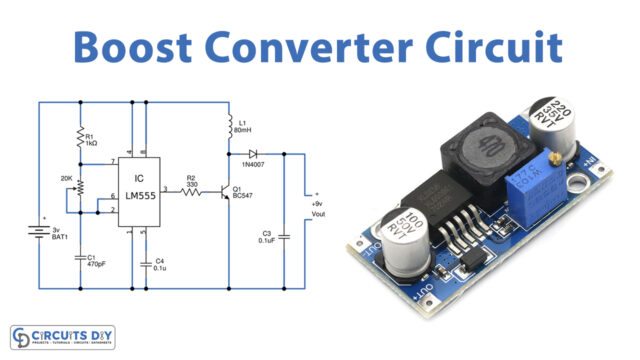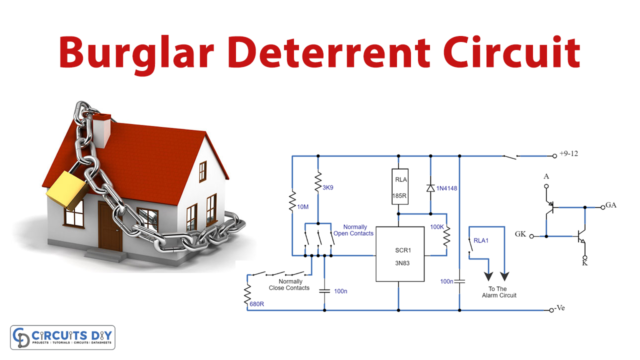Different alarm circuits are used commonly in day-to-day life as a security measure or to indicate any situation. Here in this tutorial, we are going to make a simple “Rain alarm circuit using timer IC 555″ which triggered the output buzzer when raindrops fall on the sensor.

Hardware Components
The following components are required to make the Rain Alarm Circuit
| S.No | Component | Value | Qty |
|---|---|---|---|
| 1. | Breadboard | – | 1 |
| 2. | Battery | 9v | 1 |
| 3. | Connecting Wires | – | 1 |
| 4. | IC | NE555 Timer | 1 |
| 5. | NPN Transistor | BC547 | 1 |
| 6. | Rain Sensor | – | 1 |
| 7. | Buzzer | – | 1 |
| 8. | Resistors | 470 ohms, 100k, 1k, 4.7k | 1, 2, 1, 1 |
| 9. | Ceramic Capacitor | 10uF | 1 |
555 IC Pinout

For a detailed description of pinout, dimension features, and specifications download the datasheet of 555 Timer
Rain Alarm Circuit

Working Explanation
- The rain alarm circuit consists of mainly NPN transistor BC547, a rain sensor, and a timer IC 555.
- In case of rain, water drops fall on the rain sensor and will shorten points A & B.
- In response to this, a voltage difference will be applied to the base of the transistor. In response to this, the transistor switches ON and current flows from the collector to the emitter.
- Thus, the reset PIN of the Timer IC 555 receives this positive voltage and it turns On and the buzzer starts to beep.
- Initially, there was not any positive voltage at timer IC 555 as it was connected to the ground via resistance. Thus, the timer IC was off. Timer IC works only if the reset pin receives positive voltage.
- Timer IC 555 is configured in Astable mode. thus, the buzzer will generate an oscillating sound and the oscillation frequency can be controlled by either changing the value of resistor R2 or by changing the capacitance of capacitor C1.
- Pin 5 which is the control Pin, is connected to GND through a .01uf capacitor.
- Resistor R3 controls the transistor’s collector current and resistor R4 controls the transistor’s base current.
- Rain sensors should be kept at a minimum of 30-40 degrees from the surface area, thus, preventing water to stay on the rain sensor, this we can avoid the alarm going on for a long time duration.
Applications
- Automobile industries
- Used in irrigation ways
- Water conservation purposes













